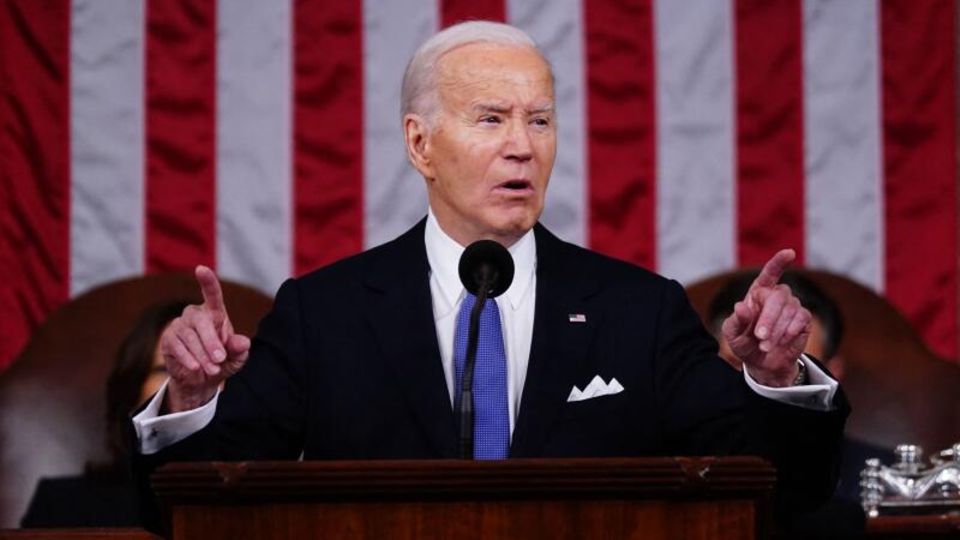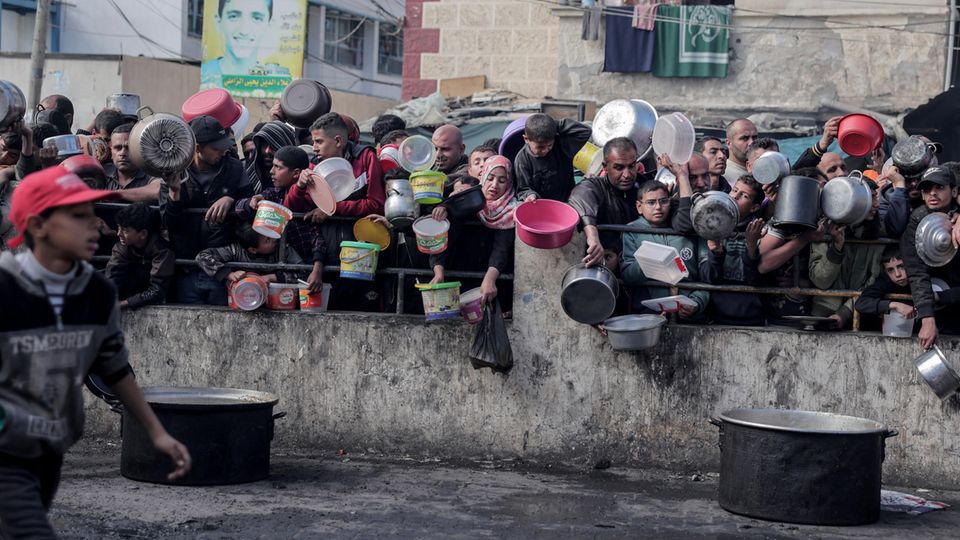Opinion
Supplying the Palestinians
A floating port off Gaza: Joe Biden’s plan is bad and full of risks
US Air Force planes parachute to drop pallets of supplies onto the beach in Gaza. US President Joe Biden would like to supply the Palestinian population in the future via a temporary port on the open sea
© Tsgt. Christopher Hubenthal/Us A/ / Action Press
There is a threat of famine in the Gaza Strip. But instead of forcing Israel to finally let enough aid through by land, the US President wants to use America’s military to supply the people by sea.
You can just about imagine the spectacular aerial photographs that will go around the world in a few weeks: a bar of pontoons, flanked by warships and helicopters, connected to the beach via floating jetties – and the apocalyptic backdrop a few hundred meters away in the background of the bombed one Gaza Strip.
US President Joe Biden is likely to imagine the floating port that he has ordered his military to build in something similar. Model: The improvised Mulberry ports through which the Allies supplied their bridgehead in Western Europe with supplies after the Normandy landings in 1944. But the hope of a D-Day for Gaza, a turning point in this terrible war, is premature.
“This is a moment for American leadership,” Biden said in his State of the Union address on Thursday evening, underscoring that he was no longer willing to wait for humanitarian concessions from Israel.
The port plan is a high-risk PR campaign in the election campaign
In fact, the port plan is initially something completely different: a sign of continued restraint on the part of the USA towards its close ally Israel. And: a highly risky PR campaign in the escalating US election campaign.
“We welcome this. At the same time, we must repeat: help from the air and by sea is no substitute for help by land.” With these words, Sigrid Kaag, UN aid coordinator for the Gaza Strip and former Dutch finance minister, commented on the announcement from Washington. The barely concealed criticism: After almost five months of unrestricted support, after uninterrupted arms deliveries worth billions and three US vetoes in favor of Israel in the UN Security Council, the Biden administration is still not putting effective pressure on Israel to send enough aid to Gaza via the existing land To allow border crossings into the Gaza Strip.
Help would be much more effective this way. Not just because it will take weeks to build the US floating port for Gaza. The logistical effort is also much lower: Israel’s ports in Ashkelon and Ashdod, where aid for Gaza could land, are less than an hour’s drive away. From Larnaca on Cyprus, the planned logistics center for the US port operation, it is almost 300 kilometers to Gaza – across the sea.
Biden’s plan relieves pressure on Israel
In Gaza, children are dying of malnutrition and hundreds of thousands are on the brink of catastrophic famine. Israel, as the de facto occupying power, is responsible for providing for the people. But instead of forcing the ally to finally fulfill this responsibility, Biden’s action exonerates the Israeli government. What aid America brings by sea, Israel no longer needs to provide by land.
In addition, it is completely unclear how the aid from the floating US port in Gaza will be distributed. State structures in the Gaza Strip have largely collapsed, civilian aid organizations are only sparsely represented – and US military soldiers should under no circumstances operate on land. As long as the distribution of aid from See is not clarified, there is a risk of chaos. The deadly chaos caused by the looting of a truck convoy a few days ago makes it clear: anyone who wants to help must ensure that the help gets to those who need it most. How this will work with help from sea is still completely unclear.
The port operation also entails considerable risks for Joe Biden himself. Keyword: mission creep. If hundreds, perhaps thousands, of U.S. forces operate in close proximity to the war zone in Gaza, they can quickly be drawn into the conflict.
Joe Biden has promised: “No boots on the ground” – no US soldiers will go ashore in Gaza. But can this be sustained if the distribution of relief supplies descends into chaos? When desperate people are trampled to death or shot on the beach in Gaza within sight of the GIs? Or if, again a terribly realistic scenario, US soldiers are attacked or killed during an aid operation in the sea off Gaza? From Hamas or one of the other local radical groups?
Is America restricting military aid to Israel?
Given all these uncertainties, it is to be hoped that overland aid will perhaps be expanded faster than the pontoon port can be built in the sea off Gaza.
On instructions from the White House, the Pentagon and the US State Department are currently compiling a list of all arms deliveries to Israel that will be approved in the coming weeks. It is the first time since the war began that Joe Biden has requested such a list. Prerequisite for the release of the deliveries: Israel must give the USA a written assurance by mid-March that it will from now on adhere to international law in the Gaza operation. Without such a “Letter of Assurances”, US arms deliveries would be stopped for the time being.
This kind of pressure from Washington could do much more to ease the plight of civilians in Gaza than Joe Biden’s port plan.




